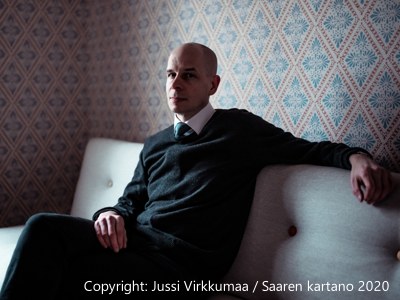Publisher: Schott Music
Duration: 23′
FP: November 19, 1999, Balingen (Trio Présence)
FP of the revised version: December 2, 2008, Berlin (Trio Fibonacci)
Further performances:
November 24, 1999, Oldenburg/Lower Saxony
November 25, 2010, Bamberg
November 26, 2010, Munich
November 28, 2010, Dresden
November 30, 2010, Berlin
June 18, 2013, Dresden
June 21, 2013, Leipzig
June 23, 2013, Chemnitz
CD: elole-Trio
Introduction:
Er riß die Blätter von dem Baum
Und ging, heißt es vom rauhen Herbst
(Robert Walser)
‘Marraskuu’ is Finnish for ‘November’; furthermore, ‘marras’ means ‘dull, dead, waste’. The piece is a homage to one of my favourite seasons, and the title should not mislead to primarily dark and gloomy thougths. Completed in November 1998 in Helsinki, the piano trio was premiered by the Trio Présence (Ekkehard Windrich, Graham Waterhouse, Michael Wendeberg) in November 1999 and thoroughly revised in Paris in November 2004.
Marraskuu is part of a series of compositions (written between 1996 and 2000) dealing with the works of Swiss writer Robert Walser – less with the actual words of his prose, but more with the sound and character of Walser’s language with its mixture of tender personal expression and seemingly unintentional, playful flow of conciousness.
Accordingly, the term ‘Piano trio’ should be apprehended as a loose entity of three mostly autonomous instrumental layers, where the togetherness of two or three instruments in regard to gestures and material organisation is rather seldom. The internal connection between the three instrumental layers is mainly based on the representation of three fundamental ideas and their variations in their parts. The duration of the 23 sections represents the first 23 prime numbers. Nevertheless, their order is different in the each of the three instrumental parts. Above that, there is a tripartite major form, in which a general pause after ca. one third of the duration marks the (superficially) most significant formal section.
However, the listener’s attention should rather be drawn towards small details: melodic fragments, a few virtuoso textures, and Kondukt-like passages. In addition, the composition contains a certain degree of freedom and sleaziness, with sections where the players may choose their entries freely in a certain time frame, or have to play in different tempo.
